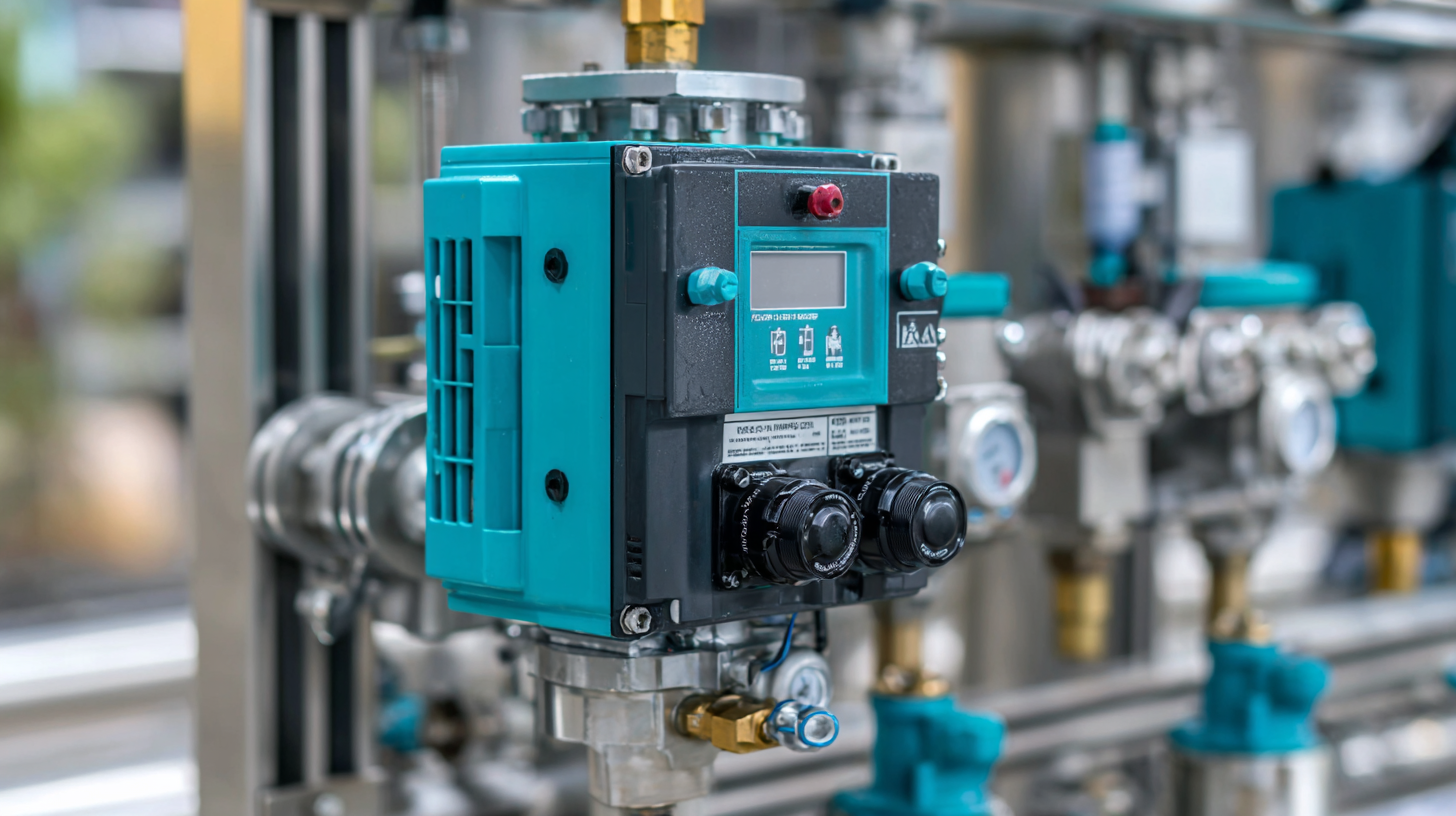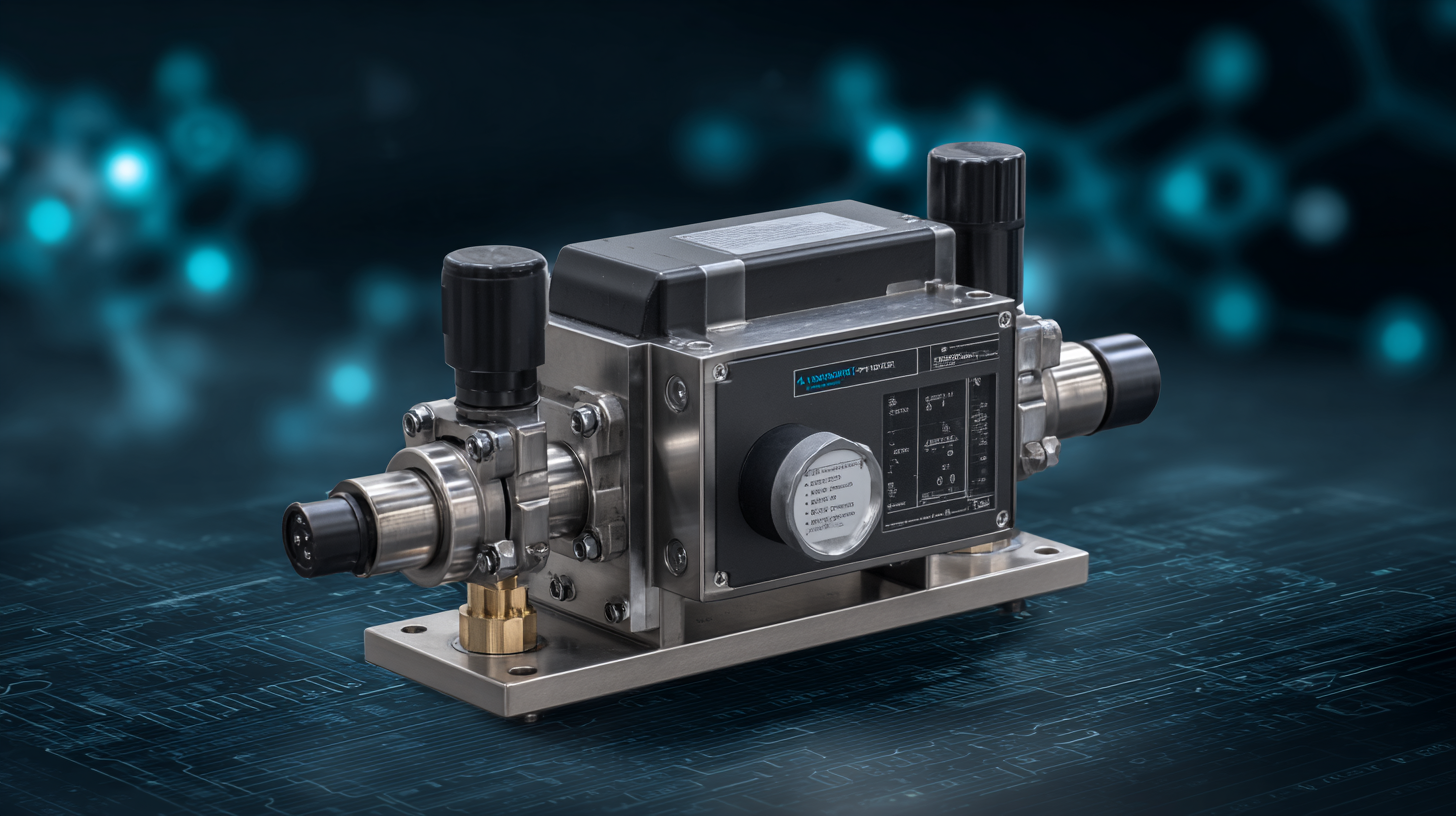Blog
- Home
- Blog
7 Best Practices for Choosing a High Pressure Metering Pump
Choosing the right High Pressure Metering Pump is crucial for ensuring efficient and accurate fluid measurement in various industrial applications. With numerous options available on the market, it can be overwhelming to determine which pump will best suit your specific needs. This blog will introduce you to seven best practices that can guide you in making an informed decision. From understanding the technical specifications to considering the application's unique requirements, each tip will help you navigate the complexities of selecting a High Pressure Metering Pump. By following these practices, you can enhance operational efficiency, reduce maintenance costs, and ultimately ensure that your pumping solutions meet the demands of a high-pressure environment. Whether you are new to the field or looking to upgrade your existing system, these insights will empower you to select the most suitable metering pump for your operations.

Understanding the Different Types of High Pressure Metering Pumps
When it comes to high pressure metering pumps, understanding the different types available can significantly impact your decision-making process. High pressure metering pumps are designed for precise fluid delivery under high pressure, making them essential in various industries, including chemical processing, pharmaceuticals, and food production. The key types include diaphragm pumps, plunger pumps, and peristaltic pumps, each offering unique advantages depending on the application requirements.

Diaphragm pumps are known for their durability and ability to handle corrosive fluids, while plunger pumps excel in delivering high pressures and are often used in applications requiring strict accuracy. Peristaltic pumps, on the other hand, are favored for their sanitary design and ease of maintenance, ideal for applications where contamination must be avoided. With the recent innovations and product expansions in pump technology, like those seen in new series launches, it's crucial to evaluate the specific features and benefits of each pump type to ensure optimal performance and reliability in your operations.
Key Factors to Consider When Selecting a High Pressure Metering Pump
When selecting a high pressure metering pump, several key factors should be taken into consideration to ensure optimal performance and reliability. First, it’s crucial to evaluate the required flow rate and pressure specifications. Understanding the application’s demands will help in choosing a pump that can handle the specific volume of fluid and maintain the necessary pressure. Additionally, consider the fluid properties, such as viscosity, temperature, and chemical compatibility, as these aspects will significantly influence the pump's material selection and design.

Another important factor is the pump’s drive mechanism. Options include electric motors, hydraulic drives, or pneumatic systems, each with its own advantages and limitations. Assessing the operational environment is also essential—factors like space constraints, ambient temperature, and potential exposure to corrosive substances can dictate the type of pump required. Moreover, evaluate the maintenance requirements and the availability of service support, as a well-supported pump installation will enhance long-term reliability and efficiency. By carefully considering these factors, you can select a high pressure metering pump that meets your specific operational needs.
Evaluating Pump Materials and Compatibility with Fluids
When selecting a high-pressure metering pump, understanding the materials and their compatibility with the fluids being transported is of utmost importance. Recent developments in technology emphasize the criticality of evaluating not just pump materials, but also how these materials interact with various fluids, especially in cases like immersion cooling technologies. For instance, the performance and longevity of pumps used in sensitive applications, such as medical devices, can be significantly impacted by the choice of materials and their resistance to degradation caused by the transported fluids.
Tips: When assessing pump materials, consider their chemical compatibility with the specific fluids. Perform compatibility tests to avoid issues such as corrosion and material degradation. Additionally, look into the long-term stability of coatings and finishes, as demonstrated in advanced blood pump technologies where hemocompatibility is crucial.
It is also vital to match the physical properties of the pump materials with the operating conditions. For example, in high-temperature applications, the selection of lubricant oils must be guided by a thorough understanding of tribological and chemical characteristics. Conduct systematic studies on material performance under varying conditions to ensure dependable operation and longevity of the pump system.
Importance of Flow Rate and Pressure in Pump Selection
When selecting a high pressure metering pump, understanding the flow rate and pressure requirements is crucial for optimal performance. Flow rate, measured in gallons per minute (GPM) or liters per hour (LPH), dictates how much fluid can be transferred in a specific timeframe. According to a report by the Hydraulic Institute, precision in flow rate is vital; inaccurate flow measurements can lead to process inefficiencies costing businesses up to 10% of their total operational expenditures. Therefore, accurately determining the required flow rate before Pump selection can significantly enhance operational efficiency.
In addition to flow rate, pressure is another critical factor that cannot be overlooked. Pump manufacturers typically provide operating pressure ranges, which need to be matched with the process requirements. A study from the American Society of Mechanical Engineers indicates that operating outside of the recommended pressure range can lead to reduced pump life and increased maintenance costs by as much as 15%. It is essential to consider both the required flow rate and pressure to ensure the selected metering pump operates within its optimal parameters, thereby maximizing efficiency and longevity.
Maintenance and Support: Ensuring Longevity of Your Metering Pump
When selecting a high pressure metering pump, maintenance and support play a crucial role in ensuring the longevity and efficiency of your system. Regular maintenance not only helps in identifying potential issues before they escalate but also allows for the optimal performance of the pump. It is essential to adhere to the manufacturer’s recommendations regarding maintenance schedules, which often include routine inspections, lubrication, and the replacement of wear parts. By following these guidelines, you can prevent unexpected downtime and costly repairs, prolonging the overall life of your equipment.
Equally important is the availability of reliable support from the manufacturer or service provider. Ensuring access to expert advice and assistance can significantly enhance the performance of your metering pump. Whether it’s troubleshooting operational issues or seeking recommendations for upgrades, having a dedicated support team makes a substantial difference. Additionally, consider the training opportunities offered by your supplier. Educated staff who understand the intricacies of proper pump operation can not only extend the life of the pump but also improve the efficiency of your processes, leading to better overall results.
7 Best Practices for Choosing a High Pressure Metering Pump - Maintenance and Support: Ensuring Longevity of Your Metering Pump
| Best Practice | Description | Impact on Longevity | Recommended Frequency |
|---|---|---|---|
| Regular Inspection | Conduct visual and operational checks regularly to identify potential issues. | Helps in early detection of wear and tear. | Monthly |
| Scheduled Maintenance | Implement routine maintenance based on manufacturer guidelines. | Enhances pump reliability and performance. | Quarterly |
| Use of Correct Fluids | Ensure compatibility of the pumped fluid with the materials in use. | Reduces the risk of chemical reactions that can damage components. | Ongoing |
| Monitoring System | Implement sensors for real-time monitoring of pressure and flow rates. | Provides instant feedback, allowing for quick responses to problems. | Continuous |
| Training Personnel | Ensure staff are well-trained in pump operation and maintenance. | Minimizes human error and enhances operational efficiency. | Annually |
| Proper Installation | Follow correct procedures during installation to prevent issues. | Ensures optimal operation from the start. | One-time |
| Cleaning and Flushing | Regularly flush the system and clean filters and valves. | Prevents clogging and potential pump failure. | Monthly |
Related Posts
-

Essential Insights: A Comprehensive Guide to Selecting Solenoid Metering Pumps for Your Applications
-

Innovative Solutions for Plunger Metering Pump Applications
-

Unlocking Efficiency: The Significant Advantages of Plunger Metering Pumps in Process Industries
-

5 Best Tips for Choosing the Right Hydraulic Pump for Your Needs
-

10 Tips for Maximizing Efficiency with High Pressure Hydraulic Pumps in Industrial Settings
-

How to Choose the Right Dosing Pump for Your Industrial Needs Based on Flow Rates and Chemical Compatibility
